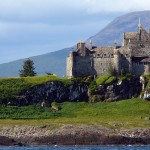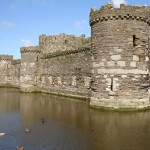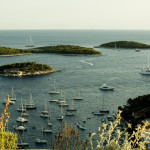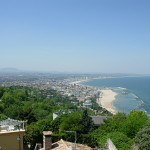Wildlife in the Canary Islands | Spain
The Canary Islands, while part of Spain are actually located very close to coast of west Africa and they consequently have an excellent climate and a huge diversity of wildlife, in particular birds and reptiles but also marine life. If you’re very keen on wildlife, the four National Parks of Teide (Tenerife), Timanfaya (Lanzarote), Garajonay (La Gomera) and Caldera de Taburiente (La Palma) should be on your list to visit.
The islands of Tenerife and Lanzarote in particular are popular destinations for Canary Islands holidays and are well developed but even these have some fantastic wildlife to see. If you’re a lover of animals then the islands are great places to visit. Here are a list of the best wildlife to spot while on your holiday:
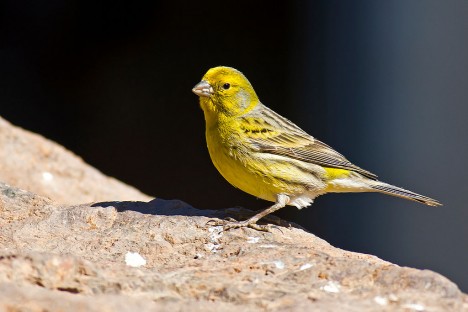
A male Atlantic Canary in Parque Rural del Nublo, Gran Canaria, Spain by Juan Emilio
The Atlantic Canary is named after the island chain, and is one of the most common pet birds in the world. They are most recognisable for their yellow plumage and distinctive song. The canary is endemic to the islands and they are very common on all of the islands, apart from on the islands of Fuerteventura and Lanzarote where they are surprisingly rare. Generally they can be found anywhere with decent amounts of trees and shrubs ranging from the pine and laurel forests to parks and orchards. It’s not unheard of to find them in sand dunes too.
Where to see them: Almost everywhere (apart from Lanzarote and Fuerteventura!)
Geckos
Various species of geckos can be found in the Canary Islands and they are by far the most common lizards. Being reptiles and therefore cold blooded, they can usually be found basking in the sun both in towns and in the country. The East Canary Gecko is one of the most common and can be identified by its pale stripes. Generally, they grow to be around 15-20cm including their tail and can only be found on the islands of Fuerteventura, Lanzarote and Lobos.
A word of caution – the gecko’s camouflage is excellent and they are surprisingly easy to step on so watch where you are walking, especially in the more rural areas.
Where to see them: commonly found basking in the sun
Giant Lizard
There are three species of the critically endangered Giant Lizard which are named after their respective islands of El Hierro, La Gomera and La Palma. These are extremely rare and in the case of the La Palma Giant Lizard, the last confirmed sighting was in 2007. All of these species live in very isolated areas (usually on cliffs) and are very difficult to catch a sighting of. The La Gomera lizard can be seen in captivity but it is recommended not to go actively searching for wild Giant Lizards as the population is extremely fragile.
Where to see them: the captive breeding population on La Gomera
Sea Turtles
There are five types of sea turtle that can be periodically seen off the islands on their migratory routes. These are the Leatherback, Loggerhead, Hawksbill, Kemp’s Ridley and the Green Sea turtle. While they no longer breed on the islands, it is thought that the Leatherback turtle once did and efforts are being made to introduce the Loggerhead species into the ecosystem.
Seeing any of these turtles is often luck of the draw but if you go scuba diving or take a boat out then you will increase your chances. The best time to see these turtles is during the summer months.
Where to see them: deeper waters around the islands
Marine Life
Dolphins and Pilot Whales pass by the islands on their migratory routes and consequently form a big part of the tourist industry in the Canary Islands. There are many boat operators that will take tourists out to see them and it’s a very popular activity. Similarly, it is possible to see various species of sharks, rays, eels and other fish. Again, specially organised boat and scuba diving trips are the best way to see these creatures.
Where to see them: All the surrounding waters of the islands
Other Species
The Canary Islands are great for wildlife and, other notable occupants include the Canary Big Eared Bat, the Canarian Egyptian Vulture, the Blue Chaffinch and various small mammals such as shrews and rats. The Mouflon (wild sheep) is an introduced species and can be seen up in the mountains in the summer and at lower altitudes in winter.
Bill Weston is a travel writer who writes about a number of locations including Canary Islands holidays – find out more at BlueBayResorts.com






